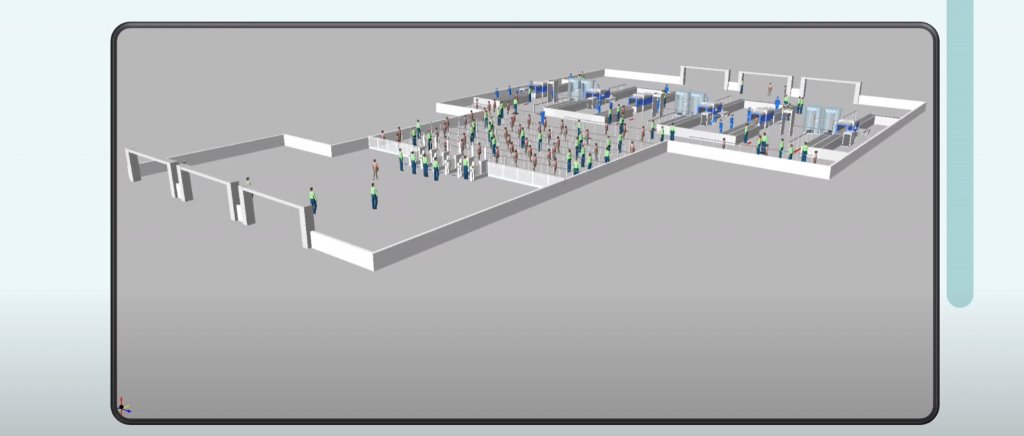Airports Council International (ACI World) has released the findings of simulations undertaken to study the impact of applying physical distancing at airport security checkpoints. The results show capacity could be reduced by up to 75% if strict distancing is implemented.
ACI World says it worked EBEA Consulting and Transoft Solutions to design 11 alternative measures to physical distancing, including pre-travel testing, continuous tray or UVC cleaning and high touchpoint cleaning, installation of plexiglass, and implementation of crowd monitoring software.
The organization notes that, while the impact and effects of the Covid-19 pandemic brought airports to a virtual standstill, airports around the world are planning for a return of passengers and providing extra measures to protect passengers and employees, with security checkpoints being a key consideration.
“Airports are examining all aspects of their operations as they seek to recover from the impact of Covid-19, foster confidence in air travel, and reassure passengers that health and safety is the number one priority,” ACI World director general Luis Felipe de Oliveira explained. “These simulations and resulting suggested mitigation measures encourage regulators and airports to plan ahead to facilitate an increase in passenger numbers, without having to compromise on health and safety.”
EBEA’s director and co-founder, Ramon Anton, added that the simulation “demonstrates that there will be a point as traffic recovers, in which physical distancing may not be compatible with an efficient security checkpoint operation. This flags the need for airport operators to start taking action now to be better prepared for when this time comes. Implementing alternative measures will ensure a smooth and safe passenger experience in every stage of the recovery process”.
Three scenarios were tested that included the need for increased space for physical distancing in the queue. The results suggest that the checkpoint capacity was reduced by up to 75% in the worse-case scenario. Even in the best-case scenario, there was a reduction in 50% capacity of a security checkpoint when implementing physical distancing.
“Alternative measures proposed to physical distancing will still achieve the same outcome, where passenger and staff members remain well protected, while reducing the impact of delays on airport operations,” Felipe de Oliveira concluded. “By adopting measures that are aligned with other industries, airports can demonstrate that they are following best practices and the World Health Organization guidance, and in so doing, can help increase passenger confidence.”
ACI World will hold a webinar looking at the impact of physical distancing on airport security checkpoints on Thursday, October, 22, at 12:00 UTC. It will explain how the simulations were developed, what the expected impacts for airports will be, and suggest mitigation measures.


